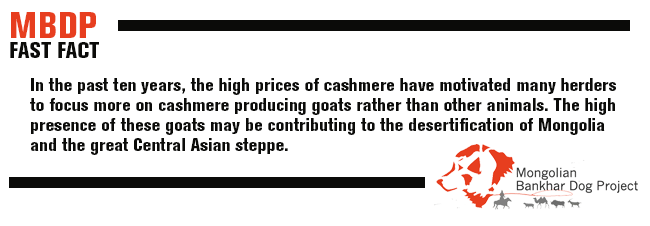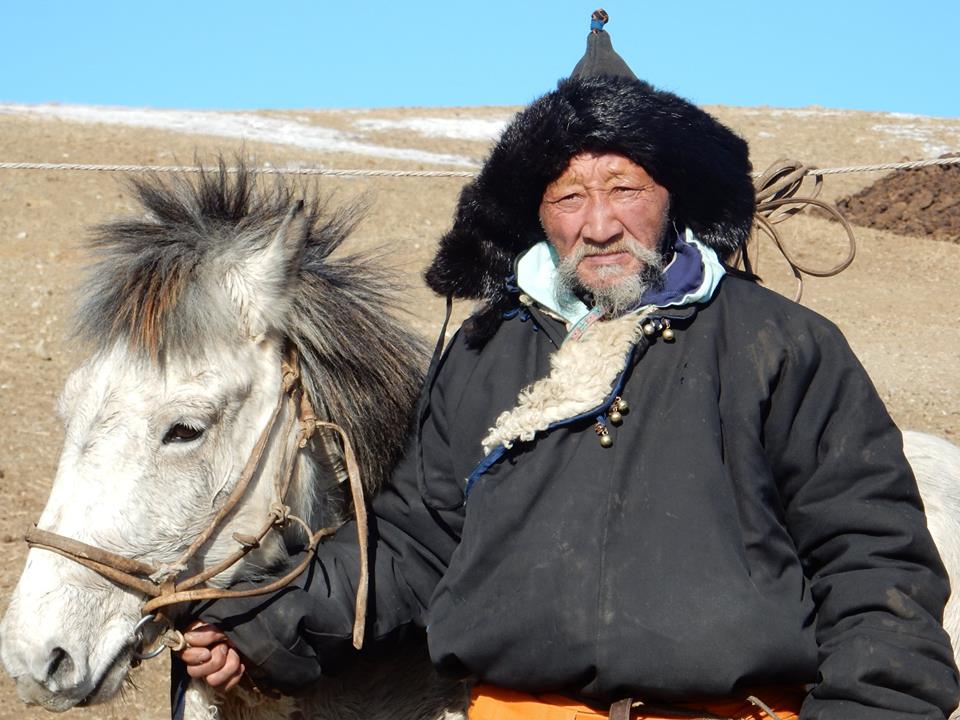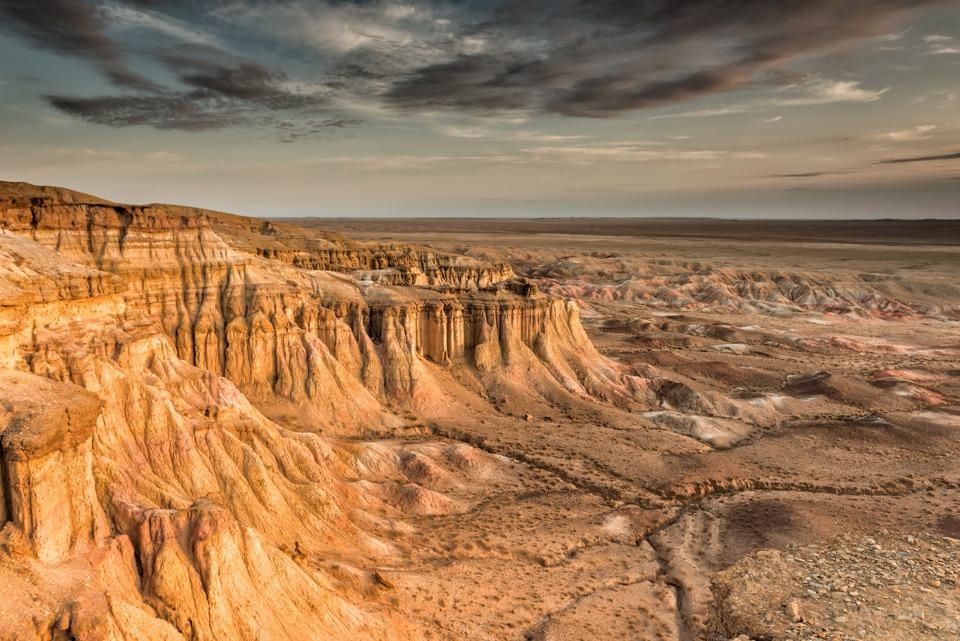ULAANBAATAR TO TSAGAAN SUVARGA
Today after loading up the trucks and sorting out last minutes details the real journey begins as the team moves out from Ulaanbaatar (aka “UB”) early in the morning, heading south on pavement for a long straight stretch towards the Gobi. The driving will be easy, but after the initial wow effect of the awe inspiring landscape wears off, the five hour drive through the vastness might get a bit tiresome.
When we finally turn off pavement onto dirt, some 400 kilometers southwest of UB, the majestic beauty of Tsagaan Suvarga is a welcome reward. Tsagaan Suvarga means “white stupa” and the rocky formations can look like a ruined city when seen from far. The sculpted cliffs, some 30 meters high and 100 meters wide, were formed by thousands of years of wind erosion. The different color layers reveal the sedimentary structure of an ancient sea bed. Tsagaan Suvarga encompasses some interesting archeological sites including a cave known as Khevtee Bosoo agui (Lie and Stand Cave) and the Bronze Age rock art of Del uul (Back Mountain).
The dirt driving is nice and easy here, and we are already deep into the awe inspiring landscape of the middle Gobi. We roll into our “Ger” camp in the afternoon, with some time to settle in. A “Ger” is the Mongolian word for “yurt,” and apparently there are a number of these encampments set up for travelers in the backcountry — kind of like nomad “motels.” We will be using this kind of lodging for much of the journey, supplemented with our own western tents for when we have to camp en route.
Most of today has been spent just getting down into the Gobi region where the nomadic herders live. Despite growing urbanization, approximately 30% of the nation’s population remains nomadic or semi-nomadic. Traditionally life revolved around the search for pasture, with families moving with their herds according to the animals’ needs. Today most are semi-nomadic — meaning they move from one specific location to another specific location at the change of the seasons. Their lifestyle has become increasingly precarious due to the combined effects of climate change, growing populations and overgrazing. Herders are caught in an intense spiral of environmental degradation. Desertification pushes them further in search of grazing lands, right into the territory of the snow leopards and wolves. Meanwhile, populations of the native antelope, the traditional prey of large predators like wolves and snow leopards, are decreasing because of depleted grasslands and habitat destruction. Depopulated antelope mean that large predators searching for food prey on nomadic livestock herds. Cattle or sheep losses can be catastrophic for households, and so the herders try to protect their livelihoods, aggressively trapping and hunting the wolves and endangered snow leopards in the process.

Families can often lose up to 40% of their annual income as a result of livestock losses to predators. This can create an absolutely untenable situation with pressure from predators forcing herders to confine livestock in higher density herds, which increases over grazing even more. Between grassland loss, climate change and predator pressure, families are forced to struggle to exist on a daily basis or chose to leave their traditional way of life behind.
According to a report from UNEP, almost 90% of Mongolia’s pastureland is vulnerable to land degradation and desertification. A recent assessment of desertification in Mongolia shows that among the land assessed, 5% are very severely, 18% severely, 26% moderately and 23% slightly degraded. This means almost all grasslands are under threat of desertification and roughly 72% of the total territory is degraded to some extent.
The area is “wild” to our eyes. An hour’s drive from camp brings us right up to the multicolored sand cliffs that had seemed so mysterious from afar. There’s enough time for a short hike to just explore a bit of the natural beauty that surrounds us. There are pinks, reds and oranges, different ores that when exposed to oxygen turn different colors, creating a kind of rainbow in the rock. It is a rough, rugged kind of beauty, and a first taste of the amazing land we are driving into.
Tomorrow we will have a chance to meet with some of the nomads, as we begin to familiarize ourselves with their world.

[Photos courtesy Mongolian Bankhar Dog Project/OEX]


You must be logged in to post a comment.